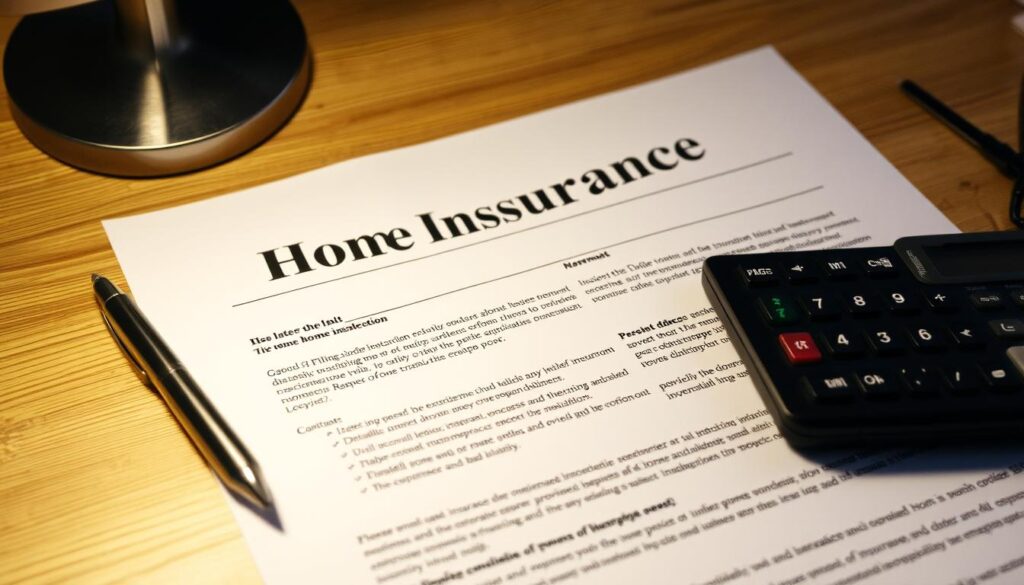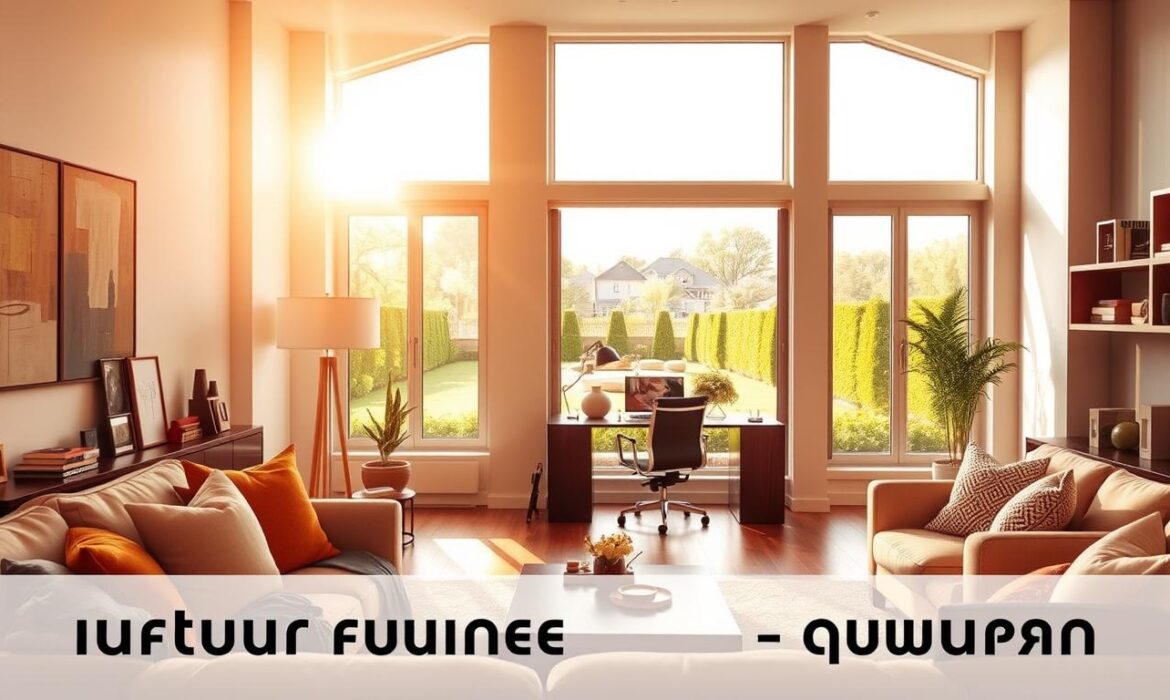Protecting your property is essential, and Singapore’s dynamic market offers over 30 providers to choose from. Whether you own an HDB flat or private property, having the right coverage ensures peace of mind against unexpected damages.
In 2025, premiums range between S$60 to S$200 annually, with providers like FWD and Great Eastern offering competitive rates. Policies often include structural protection, contents coverage, and emergency assistance—key features to consider when comparing options.
Understanding your needs is crucial. HDB owners must have fire insurance, while private homeowners benefit from comprehensive plans. Providers also differentiate themselves with perks like 24/7 claims support and eco-friendly discounts.
Key Takeaways
- Singapore’s market has over 30 providers with varied policy options.
- Premiums in 2025 average S$60–S$200 per year.
- Essential benefits include structural and contents protection.
- HDB fire coverage is mandatory; private property plans are optional.
- Look for 24/7 claims support for faster assistance.
Why You Need Home Insurance in Singapore
Singapore’s climate and urban density create unique risks for homeowners, demanding proactive safeguards. Monsoon floods, electrical fires, and burst pipes are common threats that can damage your property overnight. Without protection, rebuilding costs could drain your savings.
Protecting Your Biggest Asset
In 2024, a Tampines flat fire required S$50,000 in reconstructions—87% of fire claims involve partial rebuilding. Standard HDB fire insurance won’t cover these expenses fully. Comprehensive coverage fills gaps, shielding your equity.
Even non-fire incidents add up. Burst pipes cause 23% of claims, while urban theft averages S$8,500 per incident. Policies like FWD’s offer $0 upfront claims for emergencies, speeding up repairs.
Financial Security Against Disasters
Beyond structural damage, liability coverage protects you if a visitor slips on a wet floor. NTUC Income’s 24/7 hotline ensures help arrives fast during crises.
Many plans include temporary housing if your space becomes uninhabitable. For less than S$200 yearly, you gain peace of mind against life’s unpredictability.
Understanding Home Insurance Coverage
Choosing the right plan means knowing what’s protected—and what’s not. Policies typically divide coverage into three areas: your property’s structure, personal belongings, and liability risks. Each layer addresses different financial threats.
Building and Structural Protection
This covers permanent fixtures like walls, flooring, and built-in cabinets. Most plans exclude foundations, but HDB shells and private property interiors are usually included. Electrical systems and plumbing fall under this category too.
For example, if a pipe bursts and damages your flooring, structural coverage would pay for repairs. Always check policy details—some insurers cap payouts for specific damage types.
Contents and Personal Belongings
Your furniture, electronics, and clothes fall under contents protection. Jewelry and high-value items often have sub-limits (e.g., 5% of total contents value). MSIG even offers add-ons like S$5,000 bicycle coverage.
Policies differ in scope. “All-risk” plans from AXA or Chubb cover accidental damage, while standard options only protect against listed perils like fire or theft.
Liability and Additional Benefits
If your faulty plumbing floods a neighbor’s unit, liability coverage handles their repair costs. Aviva’s plans include S$2 million in third-party protection for such scenarios.
Extra perks matter too. AIG covers overseas possessions, while NTUC provides S$350 daily for temporary housing if your place becomes unlivable.
HDB Fire Insurance vs. Comprehensive Home Insurance
Not all protection plans are equal—HDB fire insurance covers only basic risks. While mandatory for flat owners, it’s far less robust than private market options. Understanding the differences helps you avoid costly surprises.
What HDB Fire Insurance Covers
Priced at S$4.50–S$34.50 for five years, this policy protects the bare structure: walls, floors, and original fittings. It’s designed for fire-related damage but excludes:
- Renovations exceeding S$25,000 in value
- Electronics, furniture, and personal items
- Water damage or theft
For example, a kitchen fire damaging cabinets would be covered, but not your S$5,000 fridge. “HDB’s plan is like a safety net with holes,” notes a MoneySmart comparison.
Gaps Filled by Home Insurance
Comprehensive coverage tackles what HDB’s policy misses. FWD’s plan, for instance, includes S$50,000 for renovations—crucial for owners who upgraded their flats. Other added protections:
- Theft of valuables (e.g., laptops, jewelry)
- Accidental breakage of glass fixtures
- Temporary housing during repairs
A Jurong West family saved S$18,000 after a pipe burst ruined their flooring—HDB’s policy wouldn’t have covered it. Private insurers also process claims faster (14 days vs. HDB’s 60).
“Dual coverage is smart for HDB owners. Pair the mandatory fire plan with a private policy for full peace of mind.”
Great Eastern even rewards HDB upgraders with no-claims bonuses. Always compare timelines and add-ons when choosing.
Best Home Insurance Plans in Singapore

Three insurers dominate Singapore’s property protection landscape with specialized benefits. Whether you prioritize affordability, worldwide coverage, or green living perks, these insurance plan leaders deliver tailored solutions.
FWD Home Insurance: Affordable and Flexible
Starting at just S$39 annually, FWD appeals to budget-conscious homeowners. Their policies include a workmanship guarantee—a rare feature at this price point.
First-time HDB owners benefit from interest-free claim payments during emergencies. The streamlined claims process resolves most cases within 48 hours.
AIG Home Insurance: Worldwide Coverage
Expats and frequent travelers appreciate AIG’s global personal accident coverage. This extends to overseas vacation homes, protecting belongings across borders.
With a 4.7/5 claims satisfaction rating, their 24/7 multilingual support handles emergencies anywhere. Policies automatically include S$2 million in liability protection.
“AIG’s international network saved me S$15,000 when my luggage was stolen during a home renovation abroad.”
Great Eastern: Eco-Friendly Discounts
Environmentally conscious homeowners save 15% on premiums with Green Mark certified properties. Unique benefits include solar panel protection and energy-efficient appliance discounts.
Their add-ons cover sustainable upgrades like rainwater harvesting systems. MSIG currently offers 20% first-year discounts for switchers.
- Quick comparison:
- FWD: Best for tight budgets
- AIG: Ideal for global citizens
- Great Eastern: Top green initiative rewards
Key Differences Between HDB and Private Property Insurance
HDB flats and private properties have distinct coverage needs—here’s how they differ. While HDB policies focus on basic protections, landed homes require specialized plans for unique risks like garden structures and driveways.
Coverage Scope for HDB Flats
HDB plans prioritize contents and renovations. Standard policies cover up to S$25,000 for improvements like built-in cabinets. Premiums average just S$75 annually—far below private property rates.
Key limitations include:
- No protection for external damage (e.g., corridor leaks)
- MCST fees often exclude interior repairs in condos
- Theft claims capped at 30% of contents value
Enhanced Needs for Private Homes
Landed property demands 400% more structural coverage. A 2024 study showed 62% of claims involved:
- Pool maintenance liabilities (avg. S$12,000/claim)
- Gate repairs from weather wear
- Driveway cracks from tree roots
Aviva’s S$500k garden ornament coverage proves vital for bungalows. Condo premiums jump to S$220/year due to shared building risks.
“Our Bukit Timah bungalow needed S$150k in repairs after monsoon winds tore off the roof—basic HDB plans wouldn’t have covered 10% of that.”
What to Look for in a Home Insurance Policy
Navigating policy details makes the difference between adequate protection and costly gaps. With 40% of underinsured homeowners facing 50%+ out-of-pocket expenses, understanding these four elements ensures optimal coverage.

Coverage Limits and Sub-Limits
Sum assured calculations should match your renovation costs—most insurers cap payouts at 125% of your property’s market value. High-value items often have hidden caps:
- Jewelry: Typically limited to 5-10% of contents value
- Electronics: AXA uniquely covers full replacement cost without depreciation
- Artwork: Requires separate riders above S$5,000
Photographing possessions creates proof for claims. Annual reviews adjust limits as property values rise.
Exclusions and Fine Print
Standard policies won’t cover gradual damage like termite infestations or worn-out pipes. These high-risk exclusions appear in 78% of disputes:
- Industrial accidents near your residence
- War or civil commotion events
- Floods (check if “storm surge” is included)
“I lost S$12,000 in antique repairs because my policy excluded ‘pre-existing wear’—terms I skipped during purchase.”
Compare liability clauses carefully. Some void coverage if repairs aren’t done by approved contractors.
Top Home Insurance Providers Compared
Policy features vary significantly between Singapore’s top protection providers. Smart shoppers know that beyond premiums, claim support and specialty protections make the real difference.
NTUC Income: Budget-Friendly Essentials
Starting at just S$35.64 annually, NTUC’s basic plan delivers core protections without draining your wallet. Their STAR$ rewards program gives loyal customers cashback on renewals.
You’ll appreciate the 24-hour hotline and straightforward claims process. While limited in high-value item coverage, it’s ideal for those prioritizing essential money savings.
Aviva: Customizable Add-Ons
Aviva stands out with niche protections for unique possessions. Their riders cover everything from S$15,000 wine collections to pet-related damage—a boon for animal lovers.
Musicians benefit from instrument coverage, while tech enthusiasts get full replacement value for electronics. This comprehensive coverage comes with a 72-hour claim resolution guarantee.
MSIG: Protection for Valuables
Art collectors and jewelry owners should consider MSIG’s specialized plans. They authenticate and cover individual pieces up to S$50,000, requiring only photos for verification.
Their emergency response averages just 6 hours—the fastest among competitors. Digital claims via WhatsApp make the process effortless during stressful situations.
“MSIG paid my S$28,000 art claim within three days when a leak damaged my collection. Their specialist assessors understood the pieces’ true value.”
When comparing, consider both immediate costs and long-term benefits. The right balance depends on your property’s unique risks and prized possessions.
How Much Does Home Insurance Cost in Singapore?
Five key factors determine what you’ll pay for residential coverage annually. From property type to security features, prices adapt to your specific risks and needs.

Average Premiums and Factors Affecting Price
HDB flats typically cost S$60-S$120/year to insure, while landed properties range from S$200-S$500. These differences stem from:
| Factor | Impact on Premium | Example |
|---|---|---|
| Property Age | +15% for pre-1980 buildings | 1975 shophouse in Joo Chiat |
| Location | +20% in flood zones | Lorong Marzuki bungalows |
| Security | -10% with alarm systems | Smart locks in Punggol |
TIQ’s pay-as-you-renovate model adjusts payments during upgrades. This helps owners spread costs during major improvements.
Balancing Cost and Coverage
Bundling auto and property insurance saves up to 25%. Great Eastern rewards customers who combine policies with extra perks.
Consider these real-world comparisons:
- 4-room HDB: S$72/year (basic fire + contents)
- 5-room HDB: S$98/year (includes renovation protection)
- Condo: S$220/year (shared building risks)
“Our Clementi 5-room flat saved S$300 over 3 years by adding window grilles for a security discount.”
Cheapest plans often exclude critical protections. Always verify what’s covered before committing your money.
Special Features to Consider
Beyond basic coverage, modern home protection plans offer innovative perks that enhance security and savings. These value-added benefits can make a real difference when emergencies strike or when upgrading your living space.
24/7 Emergency Assistance
When your air conditioner fails at midnight or a pipe bursts during holidays, immediate help becomes priceless. NTUC Income provides four free emergency callouts annually, covering urgent repairs for electrical systems and plumbing.
A Jurong family avoided S$1,200 in weekend repair fees when their policy’s 24/7 hotline dispatched a technician within 90 minutes. Always verify response time guarantees—some providers promise onsite help within 4 hours for critical issues.
Green Appliance Discounts
Sustainable living now lowers your premiums. Great Eastern offers 30% rebates for Energy Star-rated appliances and solar panel installations. Their eco-plus rider even covers green renovation materials against damage.
Smart home integrations like leak detectors can qualify for additional savings. One Tampines homeowner reduced annual costs by 18% after installing smart sensors and water-efficient fixtures.
“Our smart thermostat alerted us to a wiring fault before it caused a fire. The insurer waived our deductible for preventative action.”
Compare these emerging benefits when choosing plans:
- Preventative maintenance requirements affect claim eligibility
- Locksmith services often have per-event limits
- Solar panel warranties vary by provider
Common Mistakes When Choosing Home Insurance
Many homeowners unknowingly leave gaps in their protection by making simple errors during policy selection. A 2024 survey revealed 68% of Singaporeans undervalue their home contents, risking significant out-of-pocket expenses during claims. Avoiding these pitfalls ensures your coverage matches real-world risks.
The High Cost of Under-Insuring
Underestimating your property’s value triggers “average clauses,” reducing payouts by up to 50%. For example, insuring S$80,000 contents for S$40,000 means receiving only half of any claim. Kitchen renovations and smart devices top the list of underinsured items:
| Item | Typical Underinsurance Gap | Penalty Example |
|---|---|---|
| Smart TVs | 40% below replacement cost | S$2,400 loss on S$4,000 claim |
| Custom Cabinets | 60% undervalued | S$12,000 shortfall |
| High-End Appliances | 35% gap | S$1,750 out-of-pocket |
AXA’s free professional valuation service helps avoid these gaps. Digital tools like Encircle’s inventory app also prevent errors by cataloging items with photos and receipts.
Liability Blind Spots
Overlooking liability coverage can be devastating. The average claim in Singapore hits S$47,000—like when a child’s ball broke a neighbor’s antique window, flooding their unit. Standard policies may cap payouts at S$100,000, leaving you exposed.
“We paid S$28,000 from savings after our toddler damaged a condo lobby artwork. Our policy only covered S$10,000 for third-party damage.”
Umbrella policies integrate with home insurance for extended protection. Review limits after major purchases like pianos or aquariums, which increase liability risks.
How to File a Home Insurance Claim
When unexpected incidents strike, knowing how to navigate the claims process ensures swift resolution. Whether it’s water damage or theft, acting quickly and methodically maximizes your coverage benefits. Most providers require notification within 72 hours for theft-related loss.
Step-by-Step Process
Start by securing your property to prevent further damage. Take photos before making temporary repairs—these serve as evidence for your claim. Contact your provider immediately via their app or hotline.
Follow this timeline for smooth processing:
- 0-24 hours: Report incident and submit initial details
- 48 hours: Adjuster inspection (if required)
- 7-14 days: Claim decision and payout
Documents You’ll Need
Gather these materials to avoid delays:
- Police reports (for theft/vandalism)
- Itemized repair invoices with dates
- Before/after photos of affected areas
- Original purchase receipts for damaged items
“Digital claims cut processing time by 60%. I submitted my burst pipe evidence via WhatsApp and had approval in 18 hours.”
For denied claims, review your policy’s appeal process. Providers like FWD allow reconsideration with additional evidence. Keep adjuster communication professional—avoid admitting fault or speculating on causes.
Renter’s Insurance: Do You Need It?
Renting a property comes with unique risks that standard policies don’t address. From accidental fires to theft, tenants need safeguards beyond a security deposit. Over 90% of landlords now require renters to have coverage, averaging just S$15/month.

What Tenant Policies Cover
Renter’s insurance protects personal belongings like furniture, electronics, and clothing. It also includes liability if a guest gets injured in your unit. Key benefits:
- Replacement cost for stolen or damaged items
- Temporary housing if the rental becomes unlivable
- Legal fees for disputes with landlords
Students and expats often need specialized plans. For example, MSIG covers dormitory theft, while AIG extends coverage during overseas relocations.
Landlord vs. Tenant Responsibilities
Landlords (owners) insure the building’s structure, but tenants handle interior content. A 2024 case showed an Airbnb host paid S$3,200 for carpet stains—their policy didn’t cover short-term rentals.
| Scenario | Landlord Pays | Tenant Pays |
|---|---|---|
| Burst pipe damages flooring | Structural repairs | Personal item replacement |
| Visitor slips on wet tiles | — | Medical bills (liability) |
| Theft of laptop | — | Full device cost |
“Bundling renter and travel insurance saved me S$200/year—and covered my luggage stolen during a lease transfer.”
Review policies annually, especially after major purchases. Smart bundling can lower costs while expanding protections.
Expert Tips for Maximizing Your Policy
Smart homeowners know that getting the right protection is just the first step—optimizing it brings real value. These professional strategies help stretch your dollar while strengthening safeguards against Singapore’s unique risks.
Annual Policy Reviews Matter
Inflation increases rebuilding costs by 4-6% yearly. A 2022 renovation valued at S$50,000 may cost S$53,000 today—leaving you underinsured. Set calendar reminders before renewal dates to adjust sums assured.
Use these review checkpoints:
- Compare contents valuation against recent purchases
- Verify if new smart home devices need special riders
- Check loyalty discounts after 3+ claim-free years
Bundling Insurance Products
Combining auto and property plans saves 22% on average. AXA’s MultiProtect plan gives additional 15% off when adding travel insurance. The math works:
| Provider | Standalone Home | Bundled Rate | Annual Savings |
|---|---|---|---|
| FWD | S$110 | S$85 | S$25 |
| Great Eastern | S$125 | S$97 | S$28 |
| NTUC | S$98 | S$76 | S$22 |
“We saved S$312 over four years by bundling—enough to upgrade our fire protection rider.”
Ask about 45-day grace periods to align renewal dates. Some providers like MSIG offer pro-rated adjustments for mid-term additions.
Bonus Optimization Tactics
These lesser-known strategies enhance benefits:
- Install leak sensors for 5-8% premium discounts
- Negotiate using competitor quotes at renewal
- Submit minor claims strategically to preserve no-claim bonuses
Smart home data can lower cost too. A Punggol resident reduced premiums by 12% after sharing smart lock access logs proving regular maintenance.
Conclusion
Finding the right property safeguards requires balancing cost and comprehensive protection. Top providers like FWD, AIG, and Great Eastern offer distinct advantages—whether you prioritize affordability, global coverage, or eco-friendly benefits.
Customized plans prevent underinsurance risks that leave 40% of homeowners paying half the repair costs. Use comparison tools to match policies with your property’s unique needs, especially with AI-driven policies emerging in 2025.
Download our checklist to review your current home insurance gaps. With proper safeguards, you’ll gain confidence knowing your space and belongings have financial security against life’s surprises.


